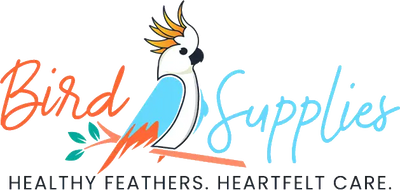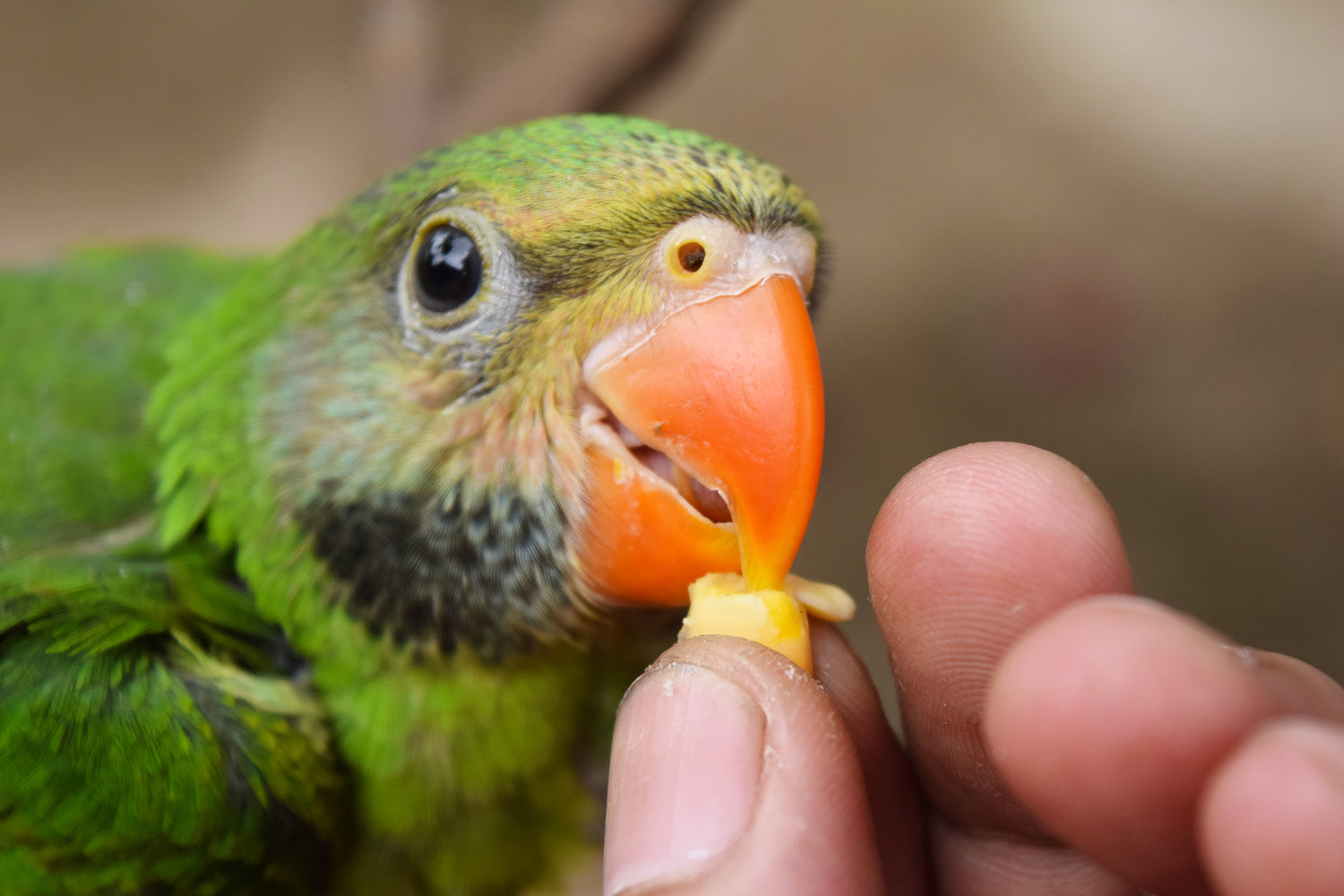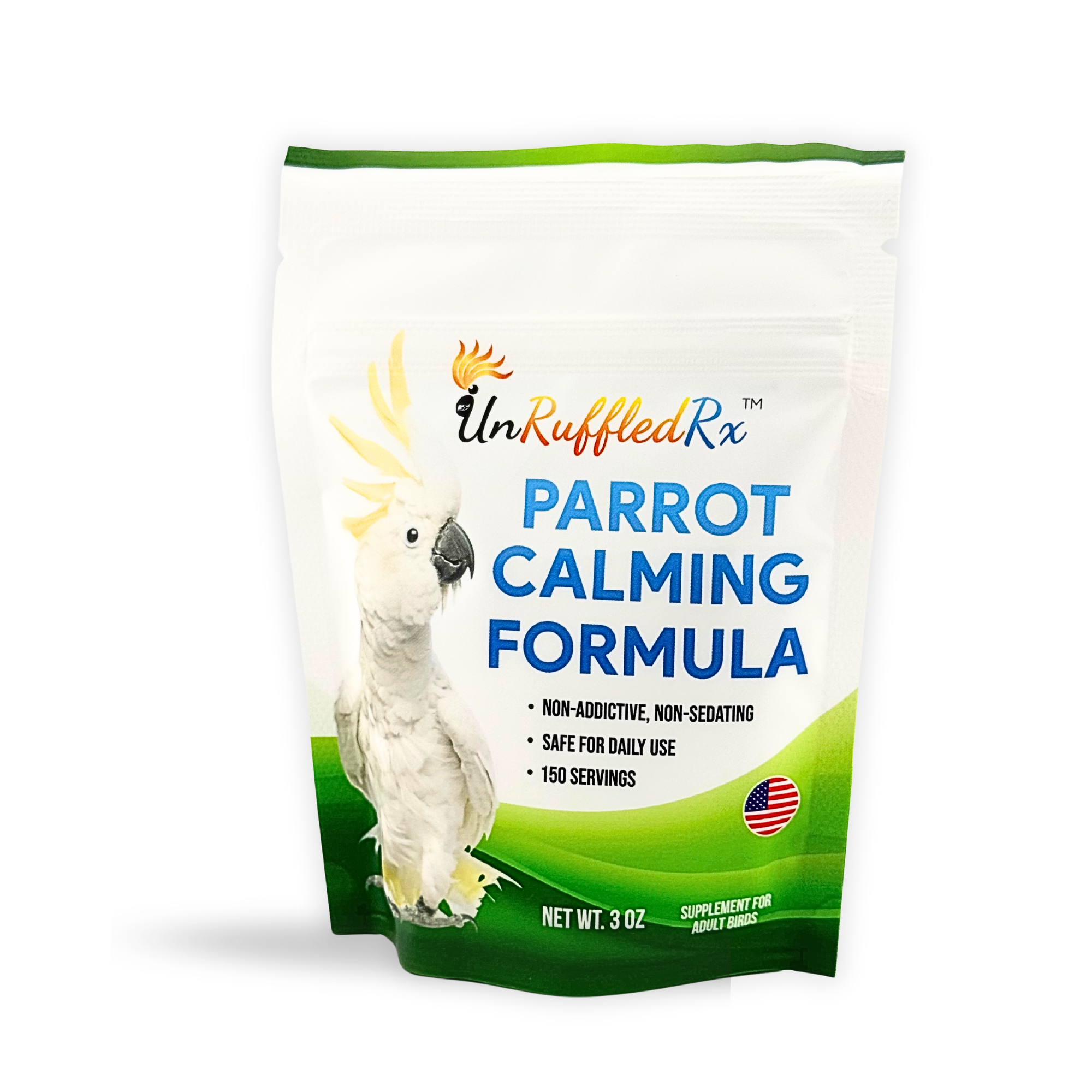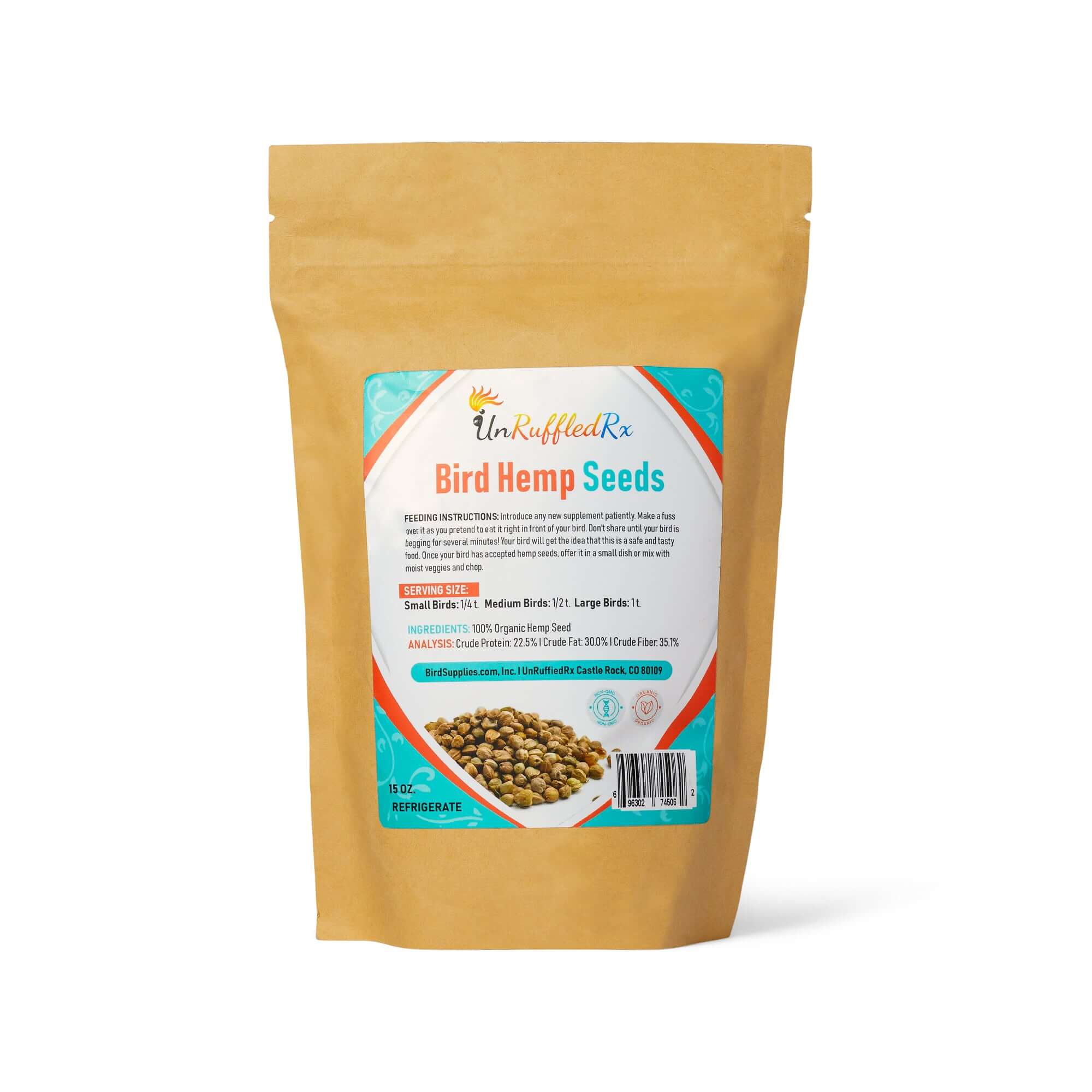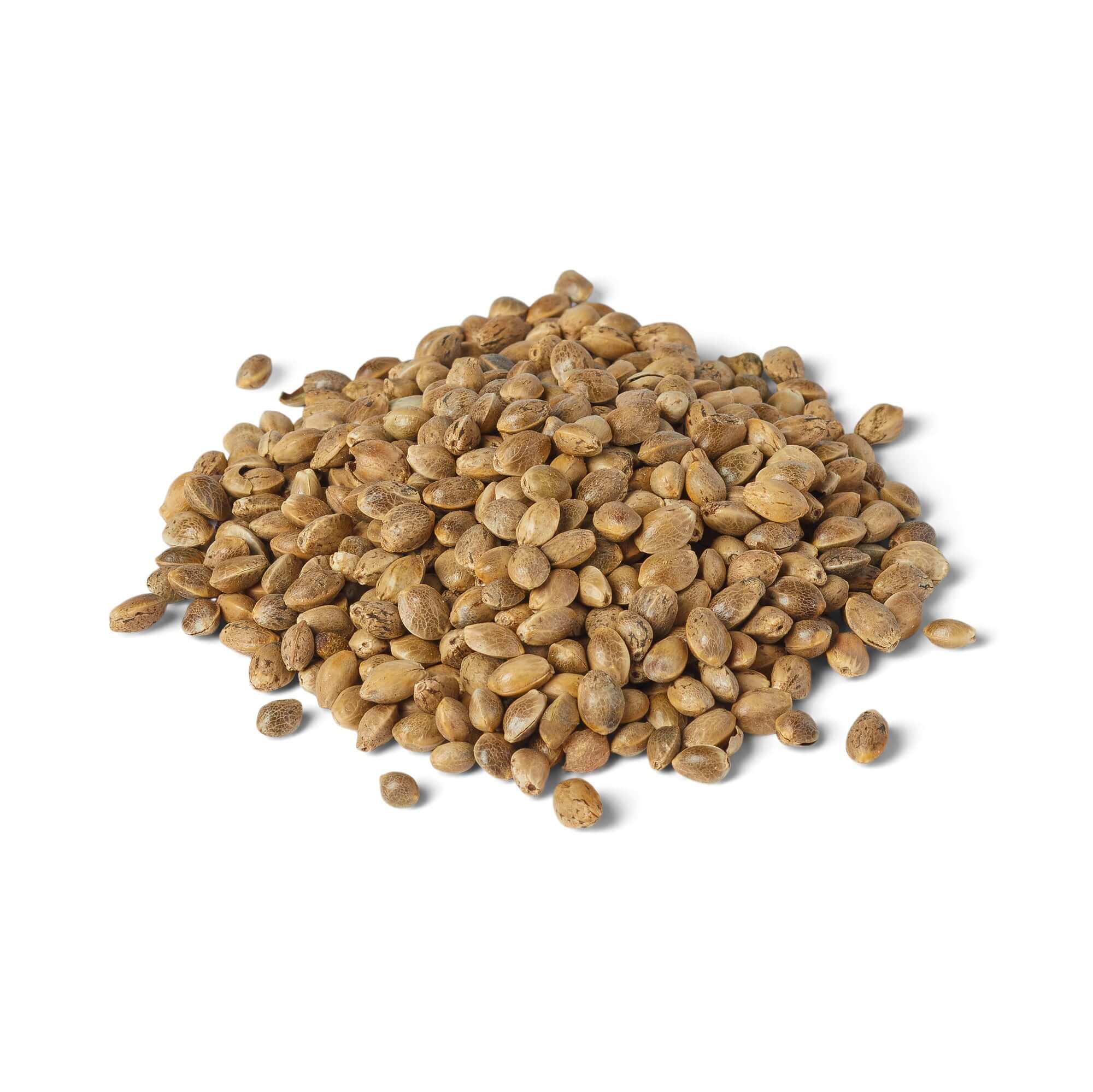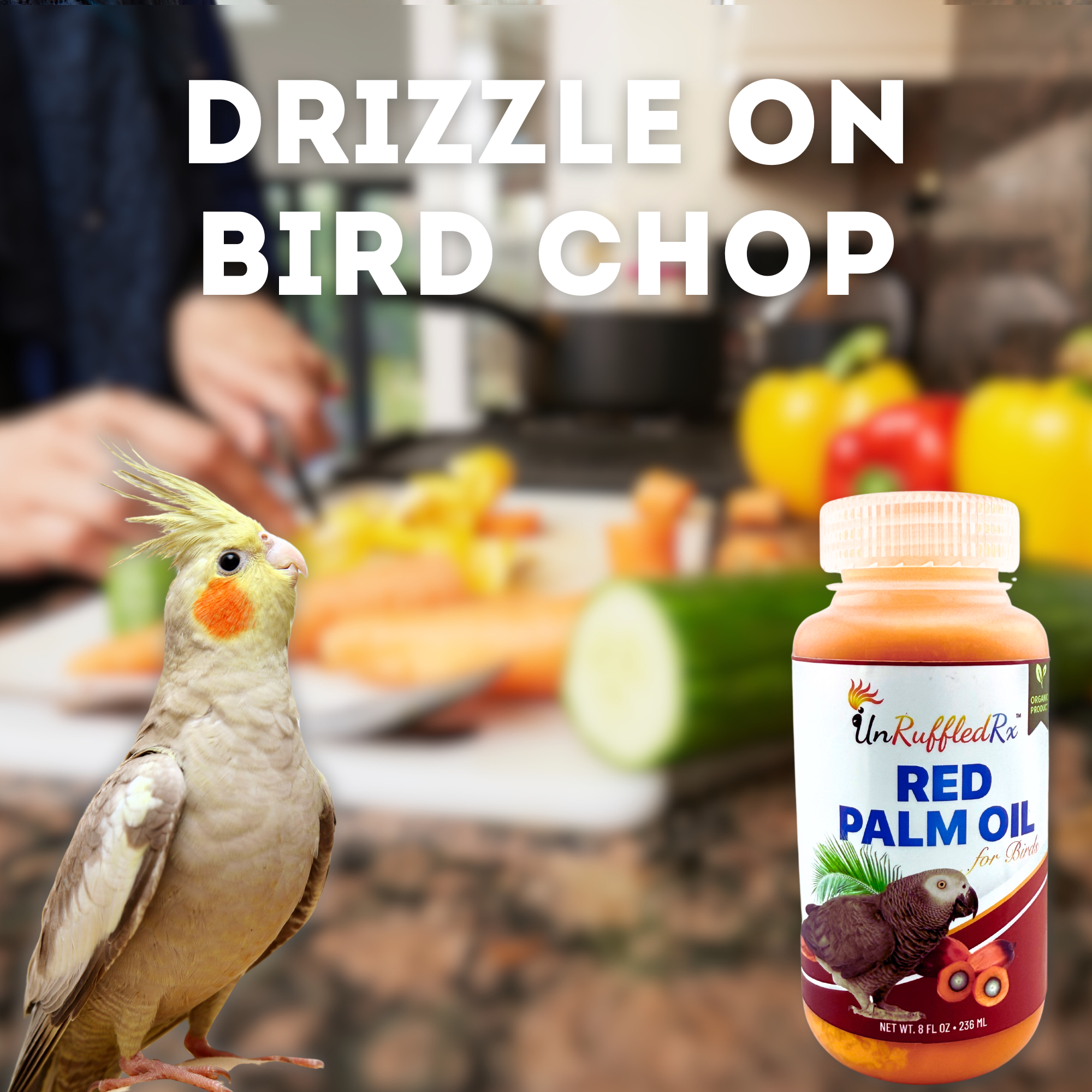Revised April 25, 2024
Table of Contents
- Are birds easy to train?
- When should you start training your bird?
- What is the easiest way to train a bird?
- What can you train a bird to do?
- Why is positive reinforcement so effective?
- What supplies do I need for a bird?
- What is the best treat for bird training?
- How do you teach a parrot no?
- How do you punish a parrot for biting?
- How do you train a parrot not to squawk?
In many countries, pet birds are the third most popular pet, right behind dogs and cats. Go ask people, “What is it about birds that makes you love him so much?” You'll get the typical answers of birds being very intelligent and having a strong sense of emotional intelligence. And, their ability to form strong interpersonal relationships definitely top the list.
Others are simply drawn to the wild nature of our flighted friends. There's just something about forming a deep bond with an animal that is “as free as a bird!”
True bird lovers talk about how their relationship with their pet literally changes their lives for the better. Anderson’s 2003 paper ‘A Bird in the House’ — have concurred. The authors describe that bird owners are more content, courteous and altruistic.
Despite being a cantankerous pet, a lot of people also attest to developing an intense personal relationship with their bird that is different from the relationship that they have with other animals. “One 2006 study in the journal Anthrozoös, found that people who prefer birds have a higher level of empathy than owners of other pets.”
But, just because we have a very deep bond with our pet birds doesn't mean that we need to let them rule the roost, per se. Each year thousands of people surrender their beloved pet birds due to behavior. These people tend to lose sight that birds are amongst the most intelligent animals on Earth and that they are deeply social. With routine training an understanding of the bird psyche a pet bird can truly become the companion that you desire.

Are birds easy to train?
A lot of people are surprised to learn just how easy birds are to train. After all, they’re as smart as a 3 - 5 year old child with a proclivity towards being quite social. Given these traits, it takes the term “bird brain” to a whole new level.
These smart creatures crave relationships and love problem-solving. With the right training strategies, they are easier to train than your family dog.
When should you start training your bird?
Many bird owners will agree that their bird’s behavior is the foundation of a very rewarding relationship. So why do so few people fail to take the bird that will help their pet fit into the family like just another member of the flock?
We all want to be able to safely handle our bird and offer it routine enrichment on a daily basis. But, when their bird starts to scream, bite, display aggressive jealousy, and refuse to come out of the cage the relationship goes south.
Whether you have a brand-new baby bird or a rescue bird you can start training your bird as soon as you choose it as a pet. Just choose positive and humane bird training strategies and let the bird pace the speed of training.
Mom and dad birds start training early. After all, their precious baby needs to know important safety and self-care skills before it becomes independent. It also needs to know how to get along with others. Survival is not a matter of how quickly they train their babies but how well they teach them.
Our hand-fed baby birds miss out on important training opportunities.
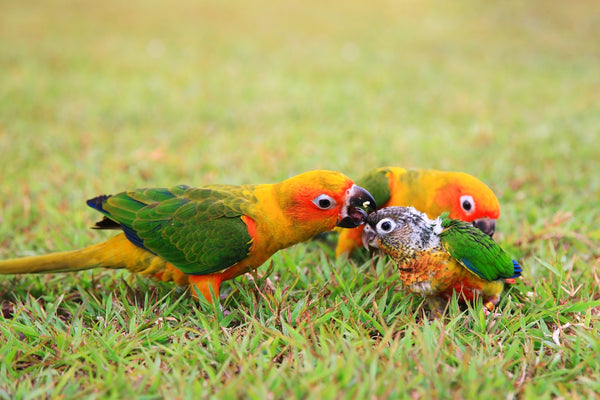
What is the easiest way to train a bird?
A parrot that doesn't have boundaries or know it's expectations is more anxious than ever. Our very social pet birds are only a few generations away from living in huge flocks in the wild where they have a sense of social structure. Your pet bird needs you to show it how to have manners so that it can be a safe and productive member of your household.
Parrot training ensures that the pet learns and develops manners. Mom and Dad parrots in the wild spend months teaching their babies the social expectations of the flock. This helps the baby know how to interact with others, rely on others and be a purposeful member of the flock.
Domestic parrots need to learn the routines of your "flock" and it is your job to teach them.
 |
"A PARROT THAT KNOWS THE MANNERS OF THE HOUSEHOLD AND IT'S PLACE IN THE "FLOCK" DEVELOPS A SENSE OF SAFETY, CONFIDENCE AND PURPOSE." |
With all that said, the easiest way to start training your bird is to learn positive reinforcement and other force-free bird training methods that actually “partner” with your bird. When you use positive, you're bird is making a choice to comply with the social norms of your household.

When we start throwing around heavy-duty psychobabble terms like “positive reinforcement” around, a lot of people just cringe. But, what if I told you that a method called Clicker Training for Birds simplifies the whole bird training process down to a few fun-filled training sessions a day that get fast and reliable results.
Our emotional and intelligent parrots still have enough of their wild characteristics intact which is why positive reinforcement works so well with them. Allows their personality to stay intact. Negative bird training methods on the other hand tend to be coercive and most birds will have none of that!
What behaviors can you train a bird?
Think of bird training as having two tracks. First you'll want to train your bird essential manners that keep it safe and equip it to get along well in your household.
Next, you'll want to teach your bird natural parrot behaviors that will allow it to have an enriching life as similar as possible to it's wild cousins in the rainforest.
Choose positivity in parrot behavior training — it’s scientifically proven to boost learning and deepen the connection between you and your feathered friend." Diane Burroughs |
Every parrot should know a few simple manners to be a fun, safe flock member of your household. We all teach our children manners so that they can safely get along in society. And, your bird is no different. it relies on you to set the stage for safety and for getting along
Important bird manners include the following:
- Stepping up and stepping down when instructed
- Coming when their name is called
- Understanding the concept of either "No," or "Leave it"
- Complying when asked to "Stay"
- Accepting care and comfort from all members of the household
If you want the best pet bird possible, you also need to train your bird how to take care of itself just like any bird needs to be independent.
Some essential natural parrot behaviors that you'll need to reinforce include the following:
- Eating a healthy diet rich in plant-based vegetables and pellets
- Properly bathing and grooming its feathers
- Learning how to entertain itself with foraging activities and playing with toys
Both manners and natural parrot behaviors can easily be taught using positive reinforcement and Clicker Training for Birds In just 15 minutes a day.

Not only that, force-free bird training methods solidify your bond with your bird unlike any other kind of attention. And, when you get the whole family involved in bird training it is less likely that your bird will form an unnatural sexual bond with one person. In other words, it'll be a true family pet.
Why is positive reinforcement so effective?
Research abounds. All animals, including parrots, respond best to positive training methods that reward desired behaviors - so much that undesired behaviors disappear.
Of course, you'll want to seriously ignore unwanted behaviors, but you can easily shape desired behaviors by knowing how to break a desired behavior into small, reachable steps and chaining them together.
In other words, say, you're training your pet to not scream. (Peachy, a Moluccan Cockatoo, is prone to screaming.) I take several steps to reduce this unwanted behavior.?
-
I have a specific training space for teaching quiet vocalizations.
-
During training time, I work on whistling and speech in a quiet voice.
-
I purposefully ignore loud and purposefully attend to quiet behaviors throughout much of the day.
-
I encourage loud vocalizations during natural times when most parrots “scream.” We have morning and evening louder communication. During these times, I encourage loud, playful interactions.
- When out on his stand, I again, purposefully engage with Peachy when he is playing quietly, safely preening, talking, whistling and engaging other fun to be around behaviors.
What supplies do I need for bird training?
Bird training equipment doesn't have to be expensive or elaborate. In fact you only need a few pieces of equipment to get started.
But, first let's talk about the ideal bird training session.
Keep it Focused: Train just one behavior per session.
Keep Your Cool: Whenever you're bird training, both you and your bird need to be in a good mood. Birds learn best in an upbeat, excited atmosphere.
Keep It Short: Plan to provide 2 - 3 short bird training sessions a day. Limit training sessions to 3 - 5 minutes each so that your bird can stay focused and you can stay positive.
Don't drag the training session out for too long. In order to be effective the training sessions need to be short and sweet! They need to be just long enough for your bird to make progress but not so long that your bird becomes fatigued in an unwilling participant.
Choose A Quiet Location: Take your bird to a place where it can be distraction-free for 3 to 5 minutes.
Use A Clicker: A clicker is a small handheld device that makes it unique clicking sound. “ Load” the clicker so that your bird associates the sound with an impending treat. The click, the treat, and your positivity provide your bird with the motivation to try his best to learn the new behavior.
Use A Dedicated Bird Training Perch
At school and at home you have a desk or a routine for homework. That piece of equipment signaled you that you had to concentrate on learning.
A bird training perch is a critical piece of bird training equipment. Your bird will need a specific training perch that you use to get it's attention that learning time has begun.
Choose a sturdy T-perch with few distractions so that your bird can concentrate. You'll want your bird to be able to make eye contact with you and you’ll also want it to be at a height where you can quickly administer treats over and over again.
What is the best treat for bird training?
There isn’t a “best” bird training treat. But, rather, a best training treat for your bird.
One way to find out what your particular bird's favorite treats are is to place several different treats in a cup, show them to your bird, and see which one the bird goes for first. Do this about 5 times just to make sure to identify your bird’s absolute favorite treat. This is it’s first choice!
Now, remove the “first choice” favored treats from the bowl and proceed to find it’s next favorite treat. Continue until you know 3-5 treats that your bird absolutely loves.
Get creative. Some birds will work for Cheerios. Others will work for papaya. The trick is to only feed your bird these favorite foods during training sessions. Smaller birds tend to go for seeds like Millet or safflower seeds. larger Birds may go for nuts or dried fruit.
Keep in mind the size of the treat. Training is most effective when your bird repeats the desired behavior over and over again in the short session. So, you want your bird to spend as much time as possible thinking about the behavior rather than eating the treat.
The treat needs to be able to be cut into a bite sized piece for your particular bird. In other words, it needs to just be a quick little nibble.
How do you teach a parrot "no"?
Parrots are intelligent creatures, and they often repeat behaviors that get them attention. When you say "no" to a behavior you don’t want, your parrot may still see this as reinforcement because they're receiving attention from you. To effectively teach your parrot, focus on reinforcing the positive behaviors you want to see. Start by choosing a few desired actions, like stepping onto a perch or speaking on cue. Consistently use a specific gesture and a clear word for each action to help your parrot understand and remember what to do.
Be careful not to accidentally reward behaviors you don’t want. For example, if your parrot squawks loudly and you talk to them or look at them, even if it's just to say "no," they might think this behavior gets your attention and keep doing it. Instead, use the good behaviors they’ve learned to redirect them from the bad ones. If they start doing something you don’t like, cue them to do a good behavior and reward them for that. This way, they learn to stick to the behaviors you like without needing to correct them harshly.
How do you punish a parrot for biting?
Punishing a parrot for biting can actually make things worse, increasing their stress and possibly leading to more aggressive behavior. Instead, it’s important to understand why your parrot is biting and address the issue with positive strategies.
consider that young or baby parrots often bite during play as they explore their environment and learn social cues. In this case, gently discourage biting by offering them appropriate chew toys or teething materials instead of your fingers. Whenever they choose the toy over your hand, praise them or offer a small treat.
p>If your parrot has a history of being punished, they might bite out of fear or distrust. Rebuilding trust with a previously punished parrot takes time and patience. Begin by spending time near their cage speaking in a soft, calm voice and gradually work up to offering treats from your hand, avoiding sudden movements that could trigger a defensive bite.Hormonal changes can also lead to increased aggression and biting. During breeding seasons, provide your parrot with a quiet, private space to reduce their stress. Limiting petting to the head and neck can prevent inadvertently stimulating mating behaviors, which can also trigger biting.
Positive reinforcement like clicker training is a great method to encourage good behavior. This technique involves using a clicker to mark the desired behavior immediately when it occurs, followed by a treat. For instance, clicking at moments when your parrot is calm or interacting gently reinforces that calm or gentle behavior is rewarding. Over time, this training method helps your parrot learn that biting is not necessary to gain attention or rewards.
Understanding the root cause of biting and addressing it through these positive reinforcement techniques can transform your interactions with your parrot, fostering a more enjoyable and respectful relationship.
How do you train a parrot not to squawk?
Parrots naturally squawk, especially during their active times at dawn and dusk, as a way to communicate. To train your parrot not to squawk excessively, you can use positive reinforcement to encourage quieter behaviors.
First, pay attention to the times and reasons your parrot squawks. This noise is often their way of expressing needs or reacting to their environment. Once you identify these triggers, you can preemptively meet their needs to reduce squawking.
Next, focus on teaching your parrot replacement behaviors. For example, you can train them to whistle or speak words as an alternative to squawking. Every time they opt for these quieter sounds, immediately reward them with their favorite treats or some affection. This positive reinforcement helps them learn that these new behaviors get a better response from you.
Lastly, keep in mind that a well-exercised parrot is generally quieter. Regular physical activity helps to burn off excess energy that might otherwise be expressed through loud squawking. Ensure your parrot has plenty of opportunities for play and exercise, whether through flying in a safe area, interacting with stimulating toys, or engaging in playtime with you. This not only keeps them healthier but also helps maintain a more peaceful environment at home.
Additionally, you can create a unique, soft call that your parrot can use instead of loud squawks. Use this call yourself regularly and reward your parrot when they mimic it. Over time, this can become their preferred way to attract your attention or communicate, reducing the frequency and volume of squawking.In conclusion, training your bird is easy when you have the right bird training supplies and the right attitude. You already have a very willing partner - a very intelligent bird that craves the socialization time and fitting in with a flock.
So, what are you waiting for? Isn't it time to improve your relationship with your bird and do away with undesired behaviors like:
- Feather plucking
- Anxiety and shyness
- Excessive screaming and biting
- Poor social skills
Take the next step today by exploring our Bird Training Courses to transform your bird’s behavior and strengthen your bond.
Related Posts:
How to train a bird using positive reinforcement
Your all in one bird training guide
How aggressive bird training techniques backfire and make your bird scared or mean
References:
https://aeon.co/essays/why-does-keeping-a-bird-in-a-cage-make-people-happy
Johnson, M. Clicker Training For Birds.
Diane Burroughs, LCSW is a licensed psychotherapist trained in ABA therapy techniques. She specializes in avian anxiety disorders and is certified in Nutrition For Mental Health. Diane has written a number of bird behavior books and she offers behavior consultations. She's developed a range of UnRuffledRx Science-backed Parrot Wellness Supplies.
Diane's products have been featured in the Journal of Avian Medicine and Surgery and at Exoticscon, a conference for exotic pet veterinarians. Her bird collars & supplements are stocked in avian vet clinics and bird stores throughout the US. With over 30 years in the field of behavior, Diane has created thousands of successful individualized behavior plans that help pets thrive.
TAGS: #BirdTraining #ParrotTraining
SHARING IS CARING! PLEASE SHARE ON YOUR FAVORITE SOCIAL MEDIA NOW!
